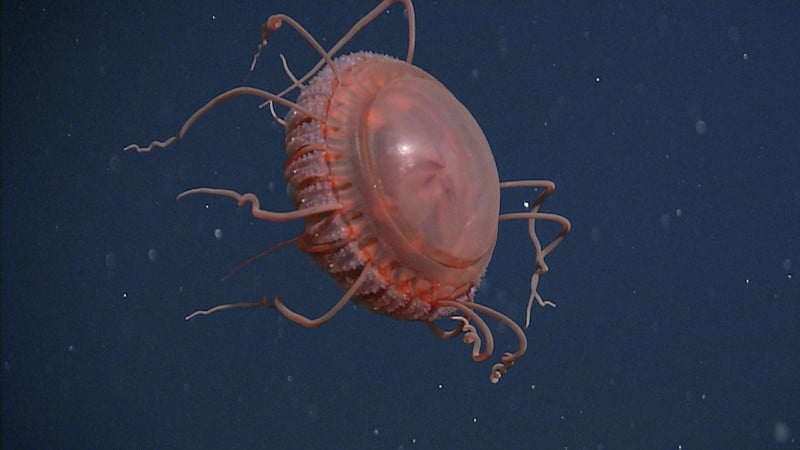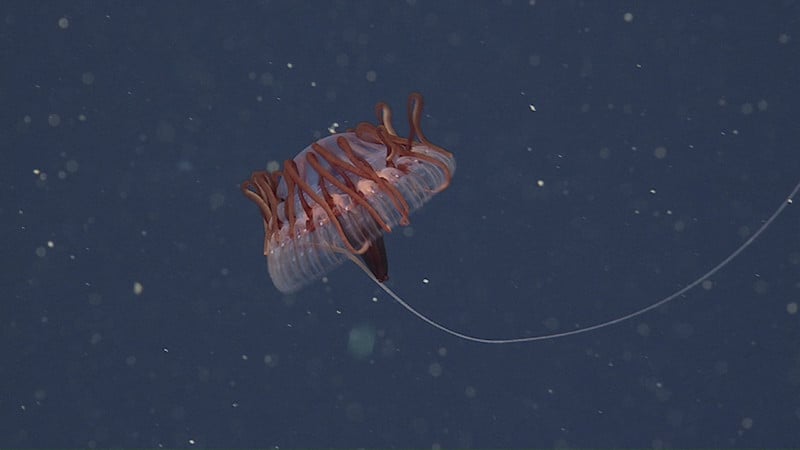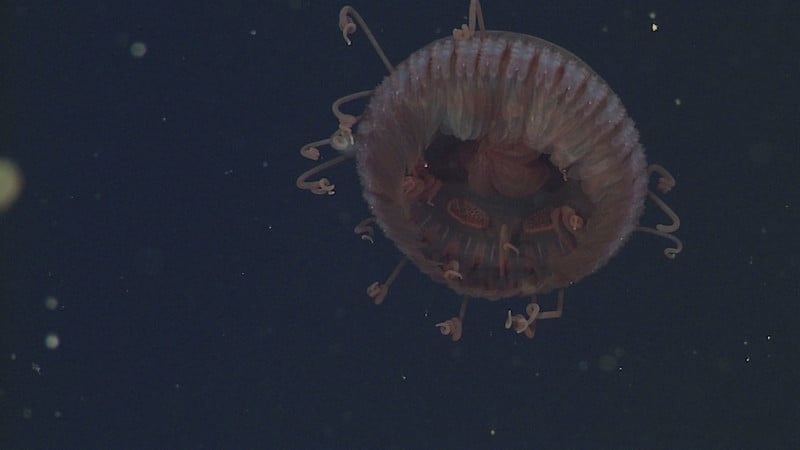Scientists from the Monterey Bay Aquarium Research Institute have captured stunning footage of a new species of deep-sea jellyfish.
MBARI researchers have published a description of the new discovery in Animals. Its name, Atolla reynoldsi, is in honor of the first volunteer at Monterey Bay Aquarium, MBARI’s education and conservation partner.
“We named this stunning new species in honor of Jeff Reynolds in recognition of the 4.3 million hours of service that he and other volunteers have contributed to the Monterey Bay Aquarium over the past 38 years,” MBARI Senior Education and Research Specialist George Matsumoto, who was the lead author on the description of this new species, says. “They have graciously given their time to educate the public about the wonders of the ocean. Aquarium volunteers have been instrumental in raising awareness about the fragility of the ocean and inspiring the public to care about the health of the ocean.”

Atolla jellyfish are a common species of deep-sea crown jellyfish that can be found in the ocean’s midnight zone all around the world and are abundant in the deep water. MBARI says it has an archive of more than 27,600 hours of video that contains thousands of observations of Atolla.
“To date, scientists recognize 10 species in the genus. Atolla chuni, A. gigantea, and A. vanhoeffeni are the most recognizable—they have unique features that make them relatively easy to identify,” MBARI says. “But others, even the common and widespread A. wyvillei, can be rather difficult to identify. Some characteristics thought to be species-specific have turned out to be less than helpful in separating out the species.”

Atolla are usually identified by a single elongated tentacle that trails behind them and can sometimes stretch up to six times the diameter of the bell.
“Fifteen years ago, MBARI researchers spotted a large jelly that looked like Atolla but lacked the telltale trailing tentacle, and their curiosity was piqued,” MBARI says.

This new species, A. reynoldsi, is described as relatively large compared to other species of Atolla. The largest specimen MBARI researchers collected was 13 centimeters (5.1 inches) in diameter, making this newly discovered species one of the largest in the genus.
A. reynoldsi lacks that signature trailing tentacle, but also is often observed with its tentacles coiled. The researchers say that tentacle number varies considerably from one individual to the next, and the new A. reynoldsi can have anywhere from 26 to 39 tentacles.
MBARI says that A. reynoldsi is not common, and researchers have only seen 10 between April 2006 and June 2021. So far, it is only known to live in the Monterey Bay at depths of 1,013 to 3,189 meters (3,323 to 10,463 feet).
MBARI has published a detailed description of the jellyfish as well as its namesake Jeff Reynolds on its website.
Image credits: All photos by MBARI.
Author: Jaron Schneider
Source: Petapixel



